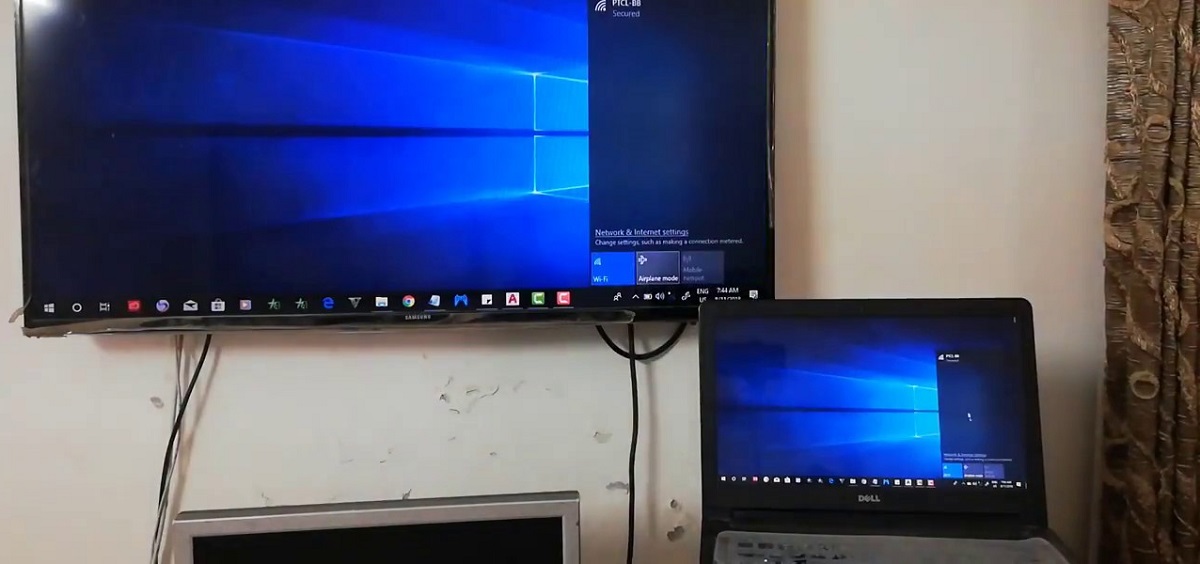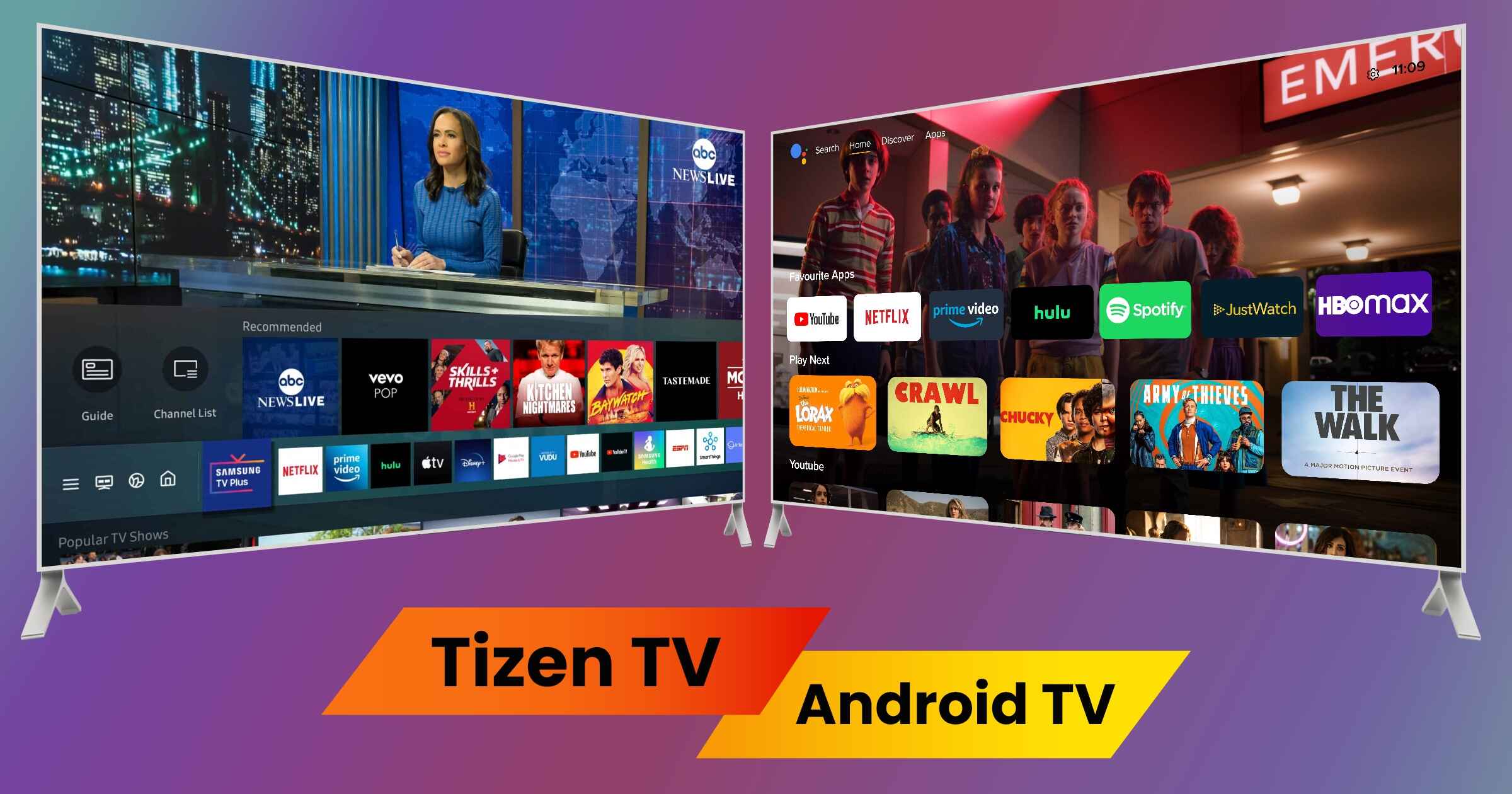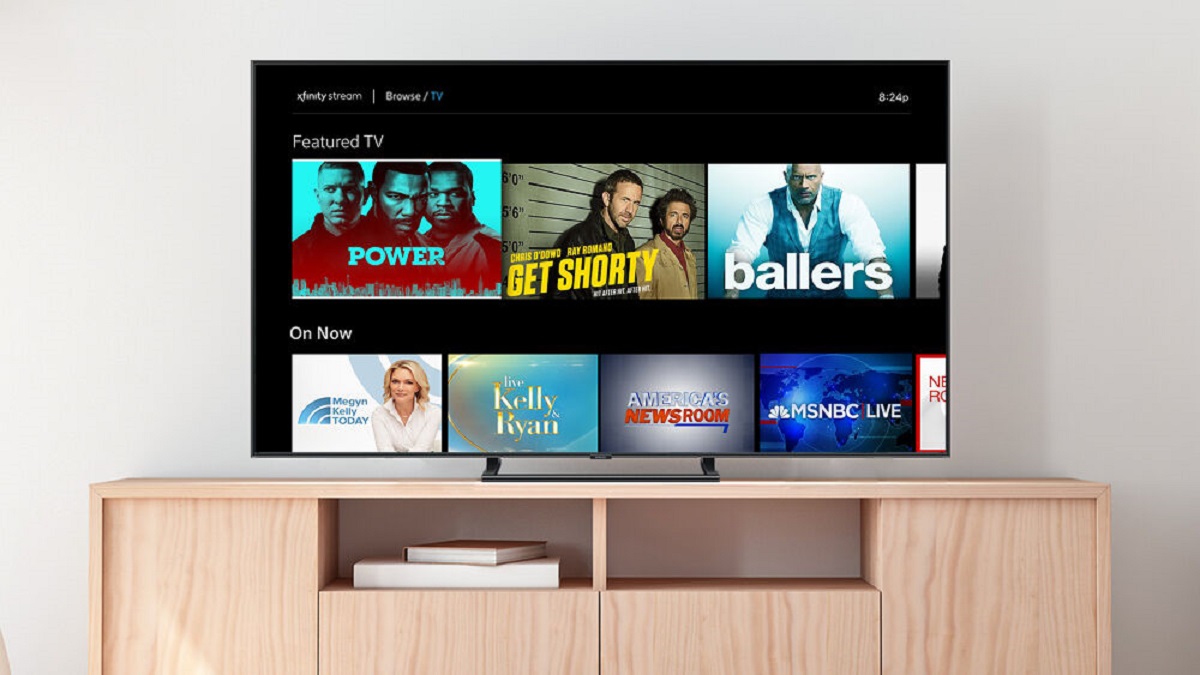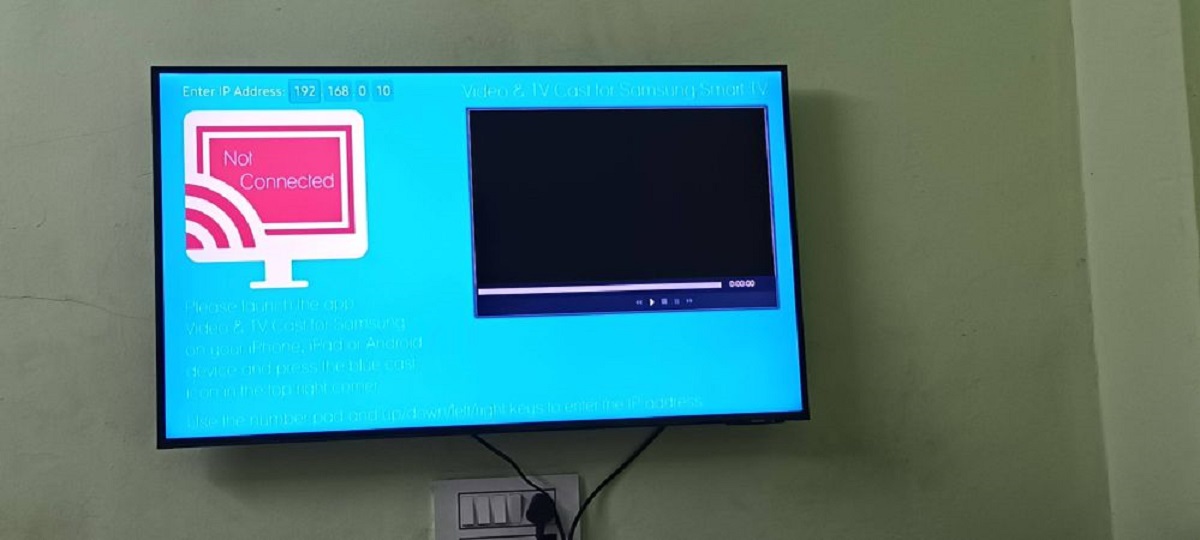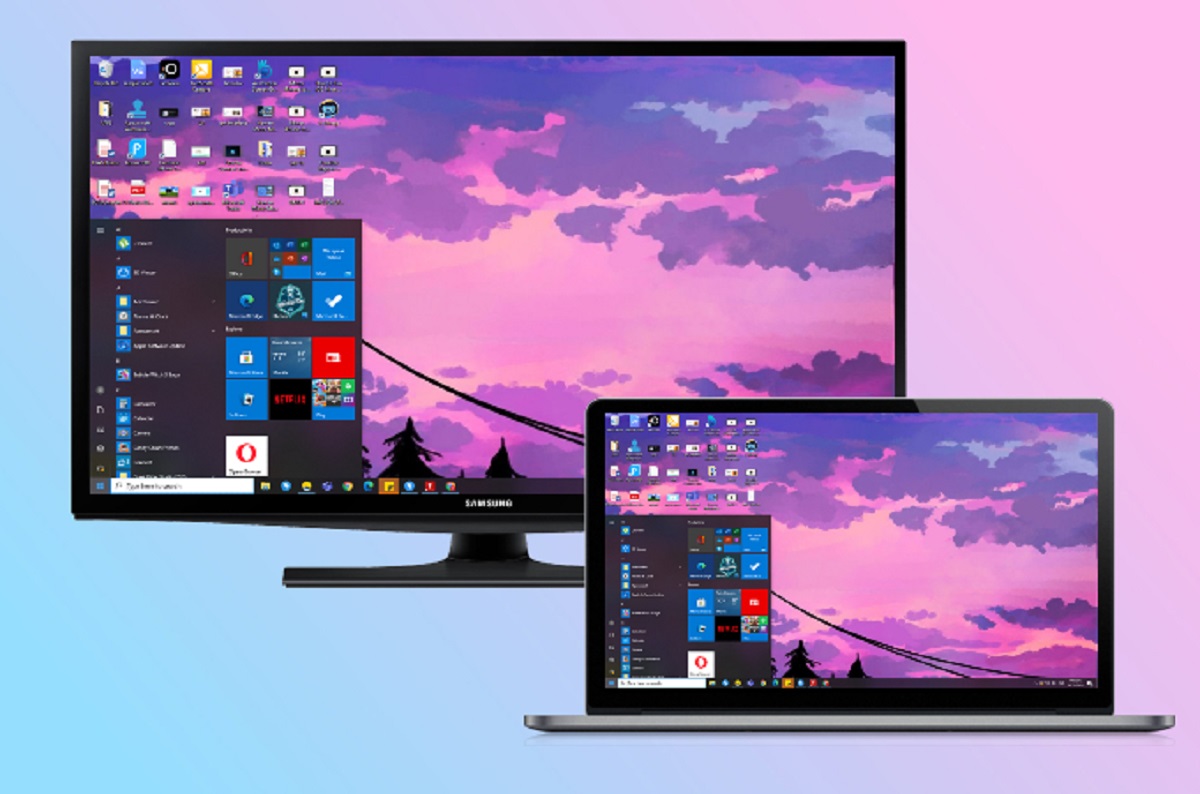Introduction
Streaming content from your laptop to your Samsung Smart TV allows you to enjoy your favorite movies, TV shows, and videos on a bigger screen. Whether you want to binge-watch a series, showcase your vacation photos, or give a presentation, streaming from your laptop to your Samsung Smart TV is a convenient and user-friendly option.
In this article, we will guide you through the steps to stream from your laptop to your Samsung Smart TV using screen mirroring. We will cover the requirements, compatibility checks, and the necessary settings to establish a seamless connection between your devices.
Before we dive into the details, it’s important to note that the specific steps and settings may vary slightly depending on the model and operating system of your laptop and Samsung Smart TV. However, the general process remains the same across most devices.
If you’re ready to transform your viewing experience and enjoy the content from your laptop on a larger screen, let’s get started!
Requirements
Before you begin streaming from your laptop to your Samsung Smart TV, there are a few requirements you need to fulfill. Ensuring that you have all the necessary elements will make the setup process smoother and minimize any potential issues. Here are the key requirements:
- Laptop with screen mirroring capability: To stream content to your Samsung Smart TV, your laptop should have built-in screen mirroring capability. Most modern laptops, especially those running on Windows or macOS operating systems, come with this feature.
- Samsung Smart TV: Ensure that you have a Samsung Smart TV with screen mirroring functionality. This feature is available on most recent models, but it’s always a good idea to check your TV’s user manual or visit the Samsung website for confirmation.
- Stable Wi-Fi network: Both your laptop and Samsung Smart TV need to be connected to the same Wi-Fi network. This ensures a seamless connection between the devices and enables smooth streaming. Make sure your Wi-Fi network is stable and has a strong signal throughout your home.
- Operating system compatibility: Verify the compatibility between your laptop’s operating system and the Samsung Smart TV. While screen mirroring is typically supported across different platforms, it’s advisable to check for any specific requirements or updates for your particular devices.
- Latest software updates: It’s essential to keep your laptop and Samsung Smart TV updated with the latest software versions. Software updates often provide bug fixes, security enhancements, and improved performance. Check for updates on both devices and install them if available.
By meeting these requirements, you’ll be well-prepared to set up the streaming connection between your laptop and Samsung Smart TV. Once everything is in place, you can move on to the next steps and start enjoying your favorite content on a larger screen.
Step 1: Check your laptop and TV compatibility
Before setting up the screen mirroring connection, it’s crucial to ensure that your laptop and Samsung Smart TV are compatible with each other. Here’s how you can check their compatibility:
- Laptop compatibility: Firstly, confirm that your laptop has screen mirroring capability. Many Windows laptops come with the “Project” feature that allows screen mirroring. To check, press the Windows key + P on your keyboard. A sidebar will appear, showing different projection options. If you see “Connect to a wireless display” or “Duplicate,” your laptop supports screen mirroring. For macOS laptops, look for AirPlay or screen mirroring options in the system settings.
- TV compatibility: Next, ensure that your Samsung Smart TV supports screen mirroring. Most Samsung Smart TVs have this feature, but it’s always best to double-check. Refer to your TV’s manual or visit the Samsung website for detailed specifications on screen mirroring compatibility. Look for terms like “Smart View,” “Screen Mirroring,” or “AllShare Cast” when checking the TV’s settings menu.
- Compatible operating systems: Verify that your laptop and Samsung Smart TV have compatible operating systems. Generally, screen mirroring works well between Windows, macOS, and Android devices. However, some older devices or models may have limitations or require certain updates. Ensure that both your laptop and TV are running on supported operating systems to guarantee a successful connection.
- Bluetooth compatibility: Check if your laptop and TV have Bluetooth capabilities. Although not necessary for screen mirroring, Bluetooth can enhance the overall connectivity and functionality between your devices. It allows for easy pairing and effortless control. Verify if both devices have Bluetooth support and if it’s enabled.
By confirming the compatibility of your laptop and Samsung Smart TV, you can proceed confidently with the screen mirroring setup. If you encounter any compatibility issues, refer to the user manuals or online support resources for troubleshooting steps specific to your devices. With compatibility established, you’re ready to move on to the next step: connecting your laptop and TV to the same Wi-Fi network.
Step 2: Connect your laptop and TV to the same Wi-Fi network
In order to successfully stream from your laptop to your Samsung Smart TV, it’s essential to have both devices connected to the same Wi-Fi network. Here’s how you can ensure they are on the same network:
- Check Wi-Fi network availability: Make sure that your laptop and Samsung Smart TV are within the range of your Wi-Fi network. Check if your Wi-Fi network is active and accessible by other devices.
- Connect your laptop to the Wi-Fi network: On your laptop, click on the Wi-Fi icon in the taskbar or system tray. A list of available Wi-Fi networks will appear. Select your desired network and enter the password if prompted. Wait for your laptop to successfully connect to the network.
- Connect your Samsung Smart TV to the Wi-Fi network: On your Samsung Smart TV, access the Settings menu. Look for the Network or Wi-Fi option and select it. From there, choose your Wi-Fi network from the available list and enter the password if required. Allow the TV a few moments to establish a connection to the network.
- Verify the Wi-Fi connection: Once both your laptop and Samsung Smart TV are connected to the Wi-Fi network, test the connection by opening a web browser on your laptop and loading a website. Similarly, access the Smart Hub or an app on your TV to ensure it has internet connectivity.
Ensuring that both devices are connected to the same Wi-Fi network is crucial for establishing a connection between your laptop and Samsung Smart TV. It allows for seamless communication and smooth streaming of content. If you encounter any issues with the Wi-Fi connection, make sure to troubleshoot by resetting your router, checking for Wi-Fi signal strength, or contacting your internet service provider for assistance.
With both your laptop and Samsung Smart TV connected to the same Wi-Fi network, you’re now ready to proceed to the next step: enabling screen mirroring on your Samsung Smart TV.
Step 3: Enable screen mirroring on your Samsung Smart TV
To stream content from your laptop to your Samsung Smart TV, you need to enable the screen mirroring feature on your TV. Follow these steps to do so:
- Turn on your Samsung Smart TV: Ensure that your TV is powered on and ready for use.
- Access the settings: On your Samsung Smart TV remote, press the Home button to access the Smart Hub. Navigate to the Settings option using the directional arrows on your remote.
- Select the Screen Mirroring/Smart View option: In the Settings menu, look for the Screen Mirroring or Smart View option. The exact name and location may vary depending on the model of your Samsung Smart TV.
- Enable screen mirroring: Once you find the Screen Mirroring/Smart View option, select it to enable screen mirroring on your TV. Some models may require you to toggle the setting on, while others may have it enabled by default.
- Note the device name/code: After enabling screen mirroring, your Samsung Smart TV will display a device name or a code. Keep this information handy as you will need it during the next steps to connect your laptop to your TV.
It’s important to note that the exact steps and naming of the screen mirroring option may differ slightly depending on your Samsung Smart TV model. If you have trouble finding the screen mirroring setting, refer to your TV’s user manual or visit the Samsung support website for specific instructions.
Now that screen mirroring is enabled on your Samsung Smart TV, you can proceed to the next step: enabling screen mirroring on your laptop.
Step 4: Enable screen mirroring on your laptop
In order to connect and stream from your laptop to your Samsung Smart TV, you need to enable the screen mirroring feature on your laptop. Here’s how you can do it:
- Windows laptops: If you have a Windows laptop, you can enable screen mirroring by following these steps:
- Press the Windows key + P on your keyboard to open the projection settings.
- A sidebar will appear with different projection options. Select “Connect to a wireless display” or “Duplicate” to enable screen mirroring.
- Your laptop will search for available devices, and your Samsung Smart TV should appear in the list. Click on it to connect.
- If prompted, enter the device name or code displayed on your Samsung Smart TV.
- macOS laptops: If you have a macOS laptop, the process for enabling screen mirroring is slightly different:
- Click on the Apple menu in the top left corner of your screen and select “System Preferences.”
- Within System Preferences, click on “Displays.”
- In the Displays menu, navigate to the “Arrangement” tab.
- Check the box that says “Mirror Displays” to enable screen mirroring.
Keep in mind that the steps for enabling screen mirroring on laptops may vary slightly depending on the model and the operating system version you have. If you encounter any issues, consult the user manual or online documentation for your specific laptop model.
Now that screen mirroring is enabled on your laptop, you can proceed to the next step: connecting your laptop to your Samsung Smart TV.
Step 5: Connect your laptop to your Samsung Smart TV
Now that you have enabled screen mirroring on both your laptop and Samsung Smart TV, it’s time to establish a connection between the two devices. Follow these steps to connect your laptop to your Samsung Smart TV:
- On your laptop:
- If you have a Windows laptop, click on the “Connect” or “Project” icon in the taskbar or system tray. Your laptop will search for available devices.
- If you have a macOS laptop, click on the AirPlay icon in the menu bar (it looks like a rectangle with a triangle at the bottom). Your laptop will search for available devices.
- On your Samsung Smart TV:
- Using your TV remote, locate and select the device name/code that corresponds to your laptop. This will establish the connection between the TV and laptop.
- If prompted on your laptop, confirm the connection to start screen mirroring.
It may take a few moments for the connection to be established. Once connected, your laptop’s screen will be mirrored on your Samsung Smart TV, allowing you to view and interact with your laptop’s content on the larger screen. You can enjoy videos, browse the internet, or even give presentations.
If you encounter any issues connecting your laptop and Samsung Smart TV, ensure that both devices are on the same Wi-Fi network and that screen mirroring is enabled and properly configured. Additionally, double-check that you have entered the correct device name or code on your TV.
With your laptop successfully connected to your Samsung Smart TV, you’re ready to move on to the next step: start streaming your desired content!
Step 6: Start streaming from your laptop to your Samsung Smart TV
Now that your laptop and Samsung Smart TV are connected, it’s time to start streaming your favorite content. Follow these steps to begin streaming from your laptop to your TV:
- Open the content you want to stream: Launch the app, website, or media player on your laptop that contains the content you wish to stream. It could be a movie, TV show, photos, or even a presentation.
- Maximize the content window: Maximize the content window on your laptop to ensure that it fills the entire screen.
- Enjoy the streaming experience: As the content plays on your laptop, it will be mirrored on your Samsung Smart TV in real-time. Sit back and enjoy the immersive viewing experience on the larger screen.
- Control playback from your laptop: Use your laptop to control the playback of the content. You can pause, play, adjust the volume, or skip to different parts of the content using the media controls on your laptop.
During the streaming process, it’s important to note that the audio will usually play through your laptop’s speakers. However, if you want to enjoy the audio through your Samsung Smart TV’s speakers, you can connect external speakers to your laptop or adjust the audio settings on your laptop to route the sound to the TV.
As you stream from your laptop to your Samsung Smart TV, make sure to keep your laptop connected to the power source to avoid interruptions due to battery drain.
Once you’ve finished streaming, you can disconnect your laptop from your Samsung Smart TV by disabling the screen mirroring feature on both devices or by turning off the TV.
Now that you know how to start streaming from your laptop to your Samsung Smart TV, you can make the most out of your entertainment and productivity needs. Enjoy your favorite content on the big screen and take advantage of the seamless connectivity between your laptop and Samsung Smart TV.
Conclusion
Streaming from your laptop to your Samsung Smart TV opens up a world of possibilities, allowing you to enjoy your favorite content on a larger screen with enhanced audiovisual experience. By following the steps outlined in this guide, you can easily set up the screen mirroring connection and start streaming.
Throughout the process, it’s important to ensure compatibility between your laptop and Samsung Smart TV, connect both devices to the same Wi-Fi network, and enable screen mirroring on both devices. By meeting these requirements and following the steps, you can establish a seamless connection and enjoy the benefits of screen mirroring.
Whether you want to watch movies, stream TV shows, showcase your photos, or deliver presentations, streaming from your laptop to your Samsung Smart TV provides a convenient and user-friendly solution. You can enjoy the content on a larger screen, making it ideal for entertainment purposes or professional use.
Remember, the specific steps and settings may slightly vary depending on the model and operating system of your devices. It’s always a good idea to refer to the user manuals or visit the manufacturer’s support website if you encounter any difficulties.
Now that you have learned how to stream from your laptop to your Samsung Smart TV, it’s time to sit back, relax, and enjoy your favorite content on the big screen. So, grab some popcorn, turn on the TV, and immerse yourself in an incredible streaming experience!









